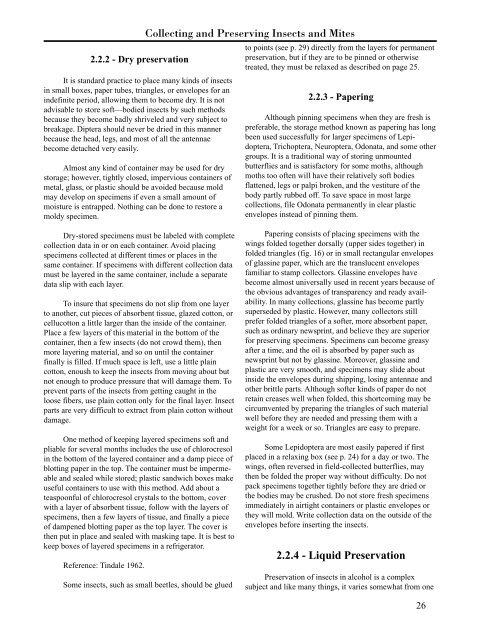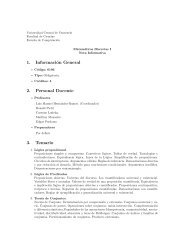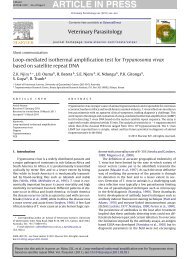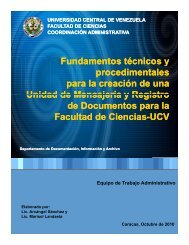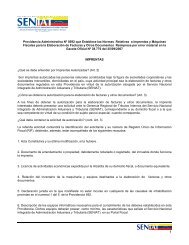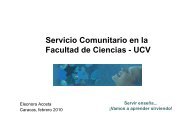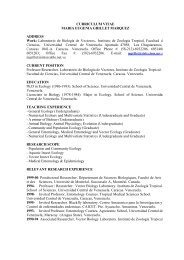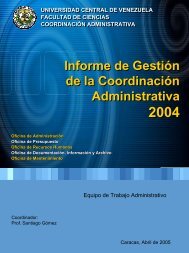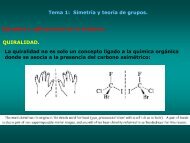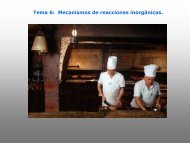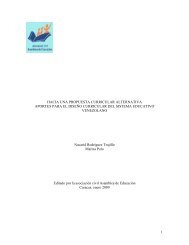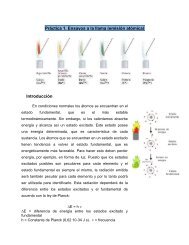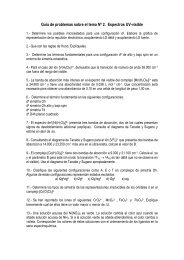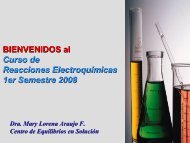Collecting and Preserving
Collecting and Preserving
Collecting and Preserving
- No tags were found...
You also want an ePaper? Increase the reach of your titles
YUMPU automatically turns print PDFs into web optimized ePapers that Google loves.
2.2.2 - Dry preservationIt is st<strong>and</strong>ard practice to place many kinds of insectsin small boxes, paper tubes, triangles, or envelopes for anindefinite period, allowing them to become dry. It is notadvisable to store soft—bodied insects by such methodsbecause they become badly shriveled <strong>and</strong> very subject tobreakage. Diptera should never be dried in this mannerbecause the head, legs, <strong>and</strong> most of all the antennaebecome detached very easily.Almost any kind of container may be used for drystorage; however, tightly closed, impervious containers ofmetal, glass, or plastic should be avoided because moldmay develop on specimens if even a small amount ofmoisture is entrapped. Nothing can be done to restore amoldy specimen.<strong>Collecting</strong> <strong>and</strong> <strong>Preserving</strong> Insects <strong>and</strong> Mitesto points (see p. 29) directly from the layers for permanentpreservation, but if they are to be pinned or otherwisetreated, they must be relaxed as described on page 25.2.2.3 - PaperingAlthough pinning specimens when they are fresh ispreferable, the storage method known as papering has longbeen used successfully for larger specimens of Lepidoptera,Trichoptera, Neuroptera, Odonata, <strong>and</strong> some othergroups. It is a traditional way of storing unmountedbutterflies <strong>and</strong> is satisfactory for some moths, althoughmoths too often will have their relatively soft bodiesflattened, legs or palpi broken, <strong>and</strong> the vestiture of thebody partly rubbed off. To save space in most largecollections, file Odonata permanently in clear plasticenvelopes instead of pinning them.Dry-stored specimens must be labeled with completecollection data in or on each container. Avoid placingspecimens collected at different times or places in thesame container. If specimens with different collection datamust be layered in the same container, include a separatedata slip with each layer.To insure that specimens do not slip from one layerto another, cut pieces of absorbent tissue, glazed cotton, orcellucotton a little larger than the inside of the container.Place a few layers of this material in the bottom of thecontainer, then a few insects (do not crowd them), thenmore layering material, <strong>and</strong> so on until the containerfinally is filled. If much space is left, use a little plaincotton, enoush to keep the insects from moving about butnot enough to produce pressure that will damage them. Toprevent parts of the insects from getting caught in theloose fibers, use plain cotton only for the final layer. Insectparts are very difficult to extract from plain cotton withoutdamage.One method of keeping layered specimens soft <strong>and</strong>pliable for several months includes the use of chlorocresolin the bottom of the layered container <strong>and</strong> a damp piece ofblotting paper in the top. The container must be impermeable<strong>and</strong> sealed while stored; plastic s<strong>and</strong>wich boxes makeuseful containers to use with this method. Add about ateaspoonful of chlorocresol crystals to the bottom, coverwith a layer of absorbent tissue, follow with the layers ofspecimens, then a few layers of tissue, <strong>and</strong> finally a pieceof dampened blotting paper as the top layer. The cover isthen put in place <strong>and</strong> sealed with masking tape. It is best tokeep boxes of layered specimens in a refrigerator.Reference: Tindale 1962.Some insects, such as small beetles, should be gluedPapering consists of placing specimens with thewings folded together dorsally (upper sides together) infolded triangles (fig. 16) or in small rectangular envelopesof glassine paper, which are the translucent envelopesfamiliar to stamp collectors. Glassine envelopes havebecome almost universally used in recent years because ofthe obvious advantages of transparency <strong>and</strong> ready availability.In many collections, glassine has become partlysuperseded by plastic. However, many collectors stillprefer folded triangles of a softer, more absorbent paper,such as ordinary newsprint, <strong>and</strong> believe they are superiorfor preserving specimens. Specimens can become greasyafter a time, <strong>and</strong> the oil is absorbed by paper such asnewsprint but not by glassine. Moreover, glassine <strong>and</strong>plastic are very smooth, <strong>and</strong> specimens may slide aboutinside the envelopes during shipping, losing antennae <strong>and</strong>other brittle parts. Although softer kinds of paper do notretain creases well when folded, this shortcoming may becircumvented by preparing the triangles of such materialwell before they are needed <strong>and</strong> pressing them with aweight for a week or so. Triangles are easy to prepare.Some Lepidoptera are most easily papered if firstplaced in a relaxing box (see p. 24) for a day or two. Thewings, often reversed in field-collected butterflies, maythen be folded the proper way without difficulty. Do notpack specimens together tightly before they are dried orthe bodies may be crushed. Do not store fresh specimensimmediately in airtight containers or plastic envelopes orthey will mold. Write collection data on the outside of theenvelopes before inserting the insects.2.2.4 - Liquid PreservationPreservation of insects in alcohol is a complexsubject <strong>and</strong> like many things, it varies somewhat from one26


